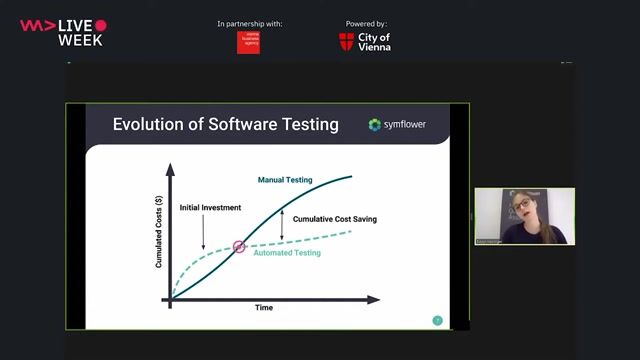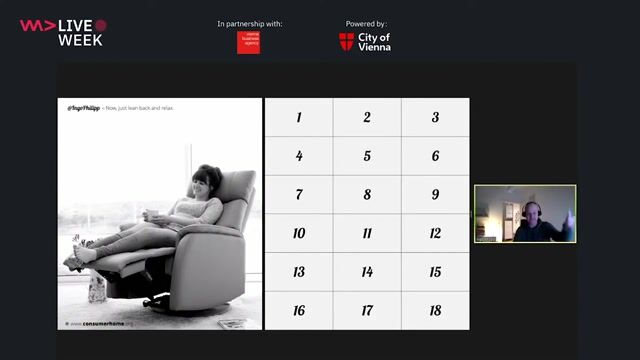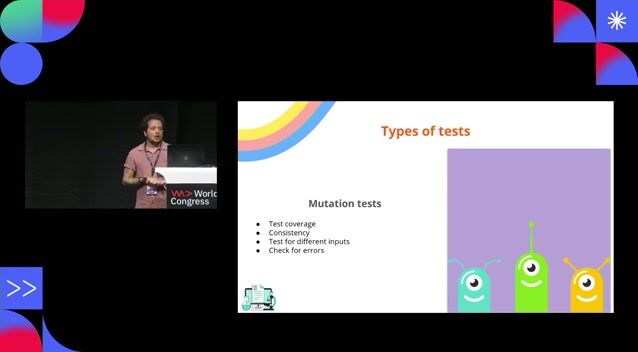Ewald Verhoeven
Test-reduction - Doing more with less
#1about 2 minutes
Why developers often view unit testing as a chore
Unit testing is often treated like a necessary but undesirable task, which raises the question of when enough testing has been done.
#2about 3 minutes
Distinguishing between code coverage and test coverage metrics
Code coverage is a quantitative metric measuring how much source code is executed, while test coverage is a qualitative metric assessing how well tests cover possible scenarios.
#3about 3 minutes
Using mutation testing to measure test suite quality
Mutation testing automatically introduces small bugs (mutants) into source code to verify that the existing test suite can detect and "kill" them.
#4about 3 minutes
Applying basic test design with the error guessing technique
Error guessing is an intuitive, experience-based technique that is good for covering happy paths but often misses important edge cases.
#5about 3 minutes
Structuring tests with the decision table technique
The decision table technique systematically covers all combinations of input conditions but becomes impractical as the number of conditions grows exponentially.
#6about 7 minutes
Generating effective test cases with property-based testing
Property-based testing generates a wide range of test inputs automatically by describing data properties rather than specifying concrete examples, excelling at finding edge cases.
#7about 2 minutes
Prioritizing test efforts using risk-based testing
Risk-based testing helps teams decide how much testing is sufficient by estimating the probability and impact of potential failures to focus efforts on high-risk areas.
Related jobs
Jobs that call for the skills explored in this talk.
Matching moments

09:07 MIN
Why traditional testing methods fail to guarantee quality
How will artificial intelligence change the future of software testing?

10:30 MIN
Testing is a social and human-centric science
Excellent Software Testing

41:20 MIN
Summary of key principles for better testing
Write tests you love, not hate

01:24 MIN
Identifying the common pains of software testing
Write tests you love, not hate

14:33 MIN
Adapting testing practices to context and purpose
Excellent Software Testing

25:58 MIN
Using mutation testing and metrics to improve quality
Testing .NET applications a Tool box for every developer

00:04 MIN
Fostering a safer environment with a testing culture
Testing .NET applications a Tool box for every developer

18:32 MIN
Learning from history and collaborating with the team
Excellent Software Testing
Featured Partners
Related Videos
 28:12
28:12Your Testing Strategy is broken - lets fix it!
Luise Freese
 43:07
43:07How not to test
Golo Roden
 20:33
20:33Breaking the Bug Cycle: TDD for the Win
Nadeen Hussein
 26:33
26:33How Unit Testing Saved My Career
Annelore Egger
 56:49
56:49Write tests you love, not hate
Jens Happe
 24:19
24:19It's a (testing) trap! - Common testing pitfalls and how to solve them
Ramona Schwering
 26:20
26:20How to add test automation to your project: The good, the bad, and the ugly
Augustin Gottlieb
 28:33
28:33The 2025 State of JavaScript Testing
Daniel Afonso
From learning to earning
Jobs that call for the skills explored in this talk.

Test System and Release Engineer (m/w/d)
AKDB Anstalt für kommunale Datenverarbeitung in Bayern
München, Germany
Intermediate
Senior
JavaScript
Automated Testing


Parttime Software Tester
Codevid






Software Quality Engineer - Automation & Test Enablement
primion Technology GmbH
Remote
Azure
Gitlab
Terraform
TypeScript
+1